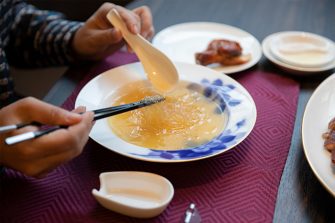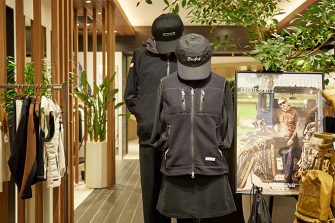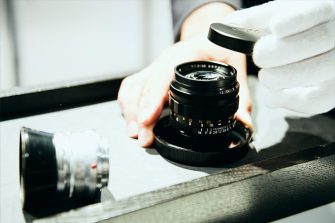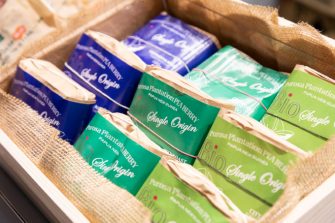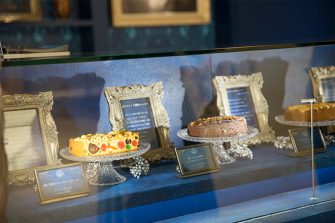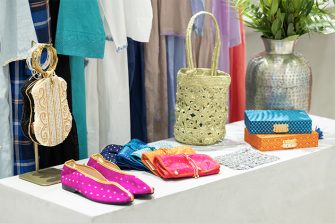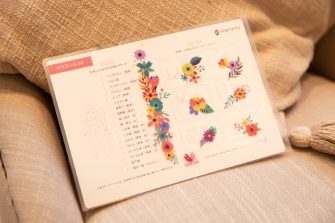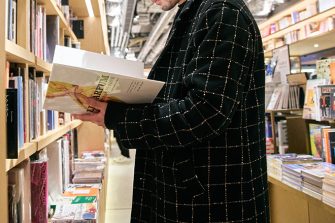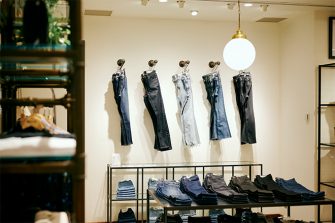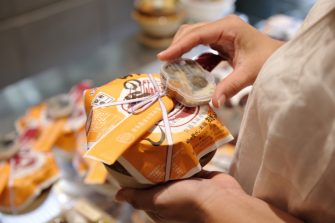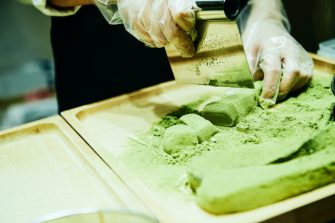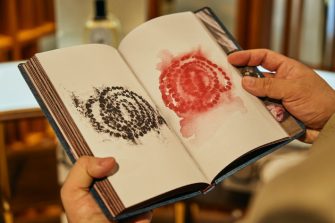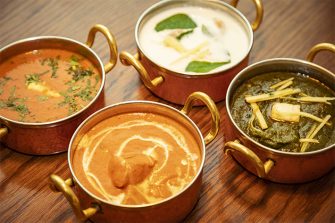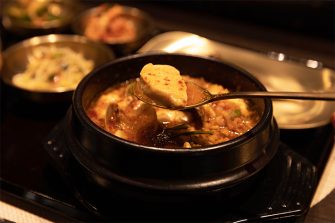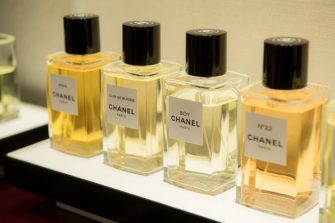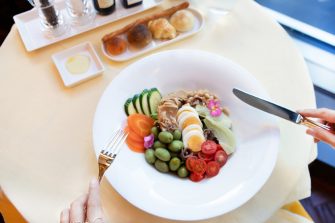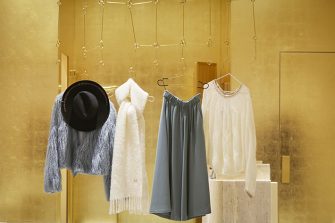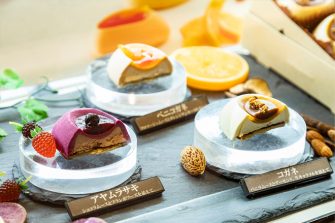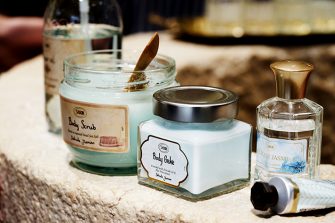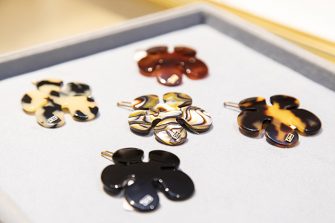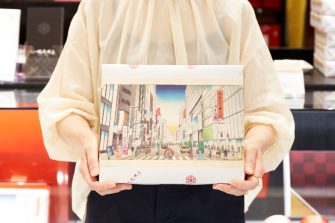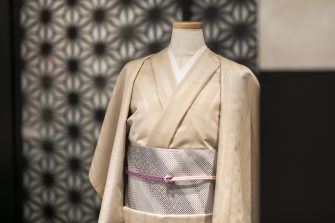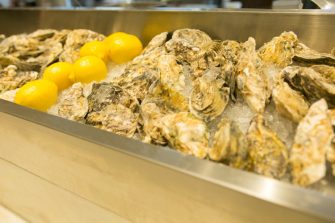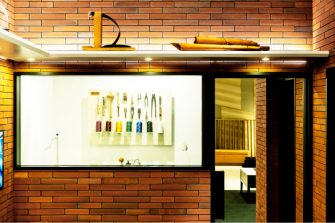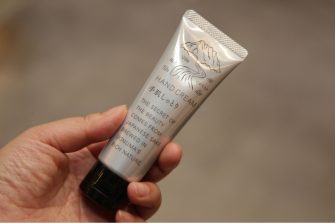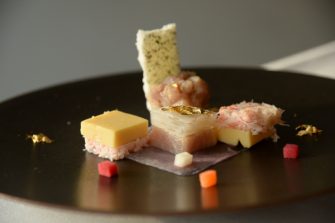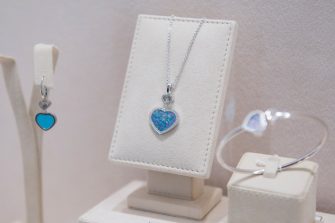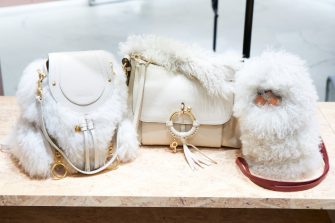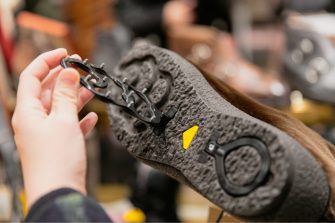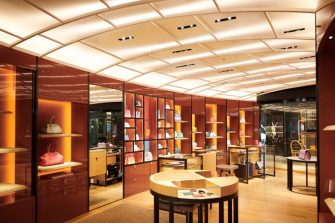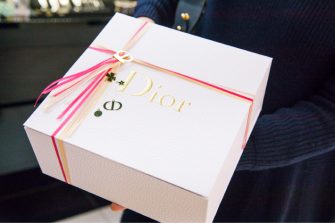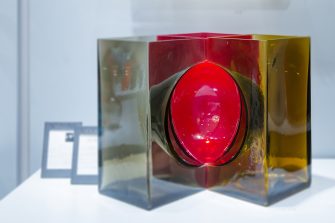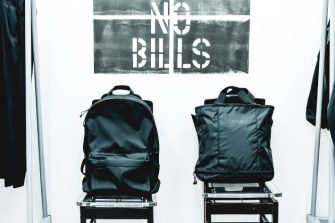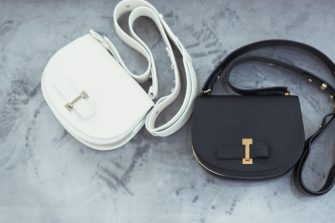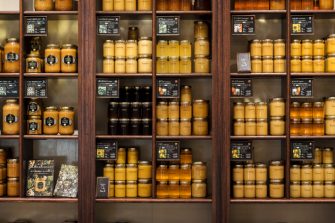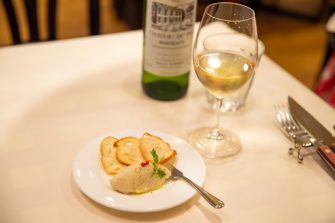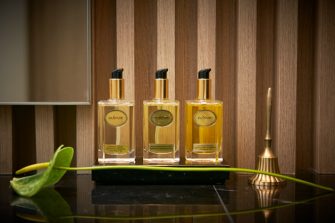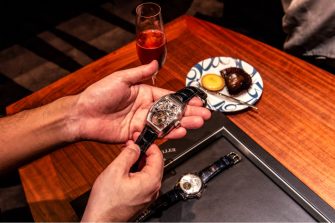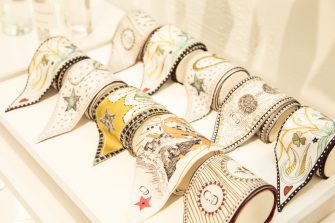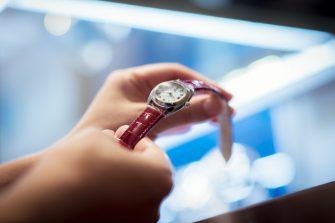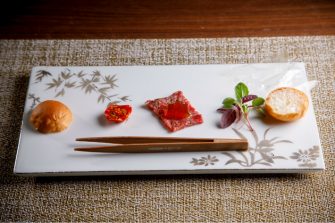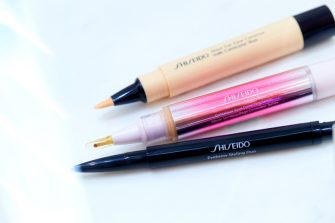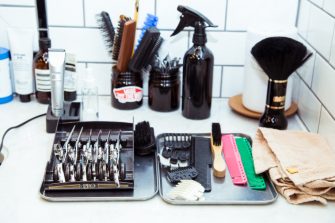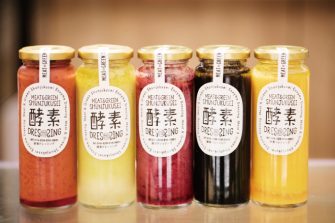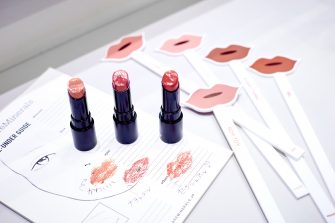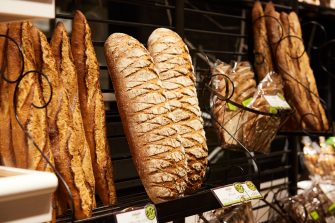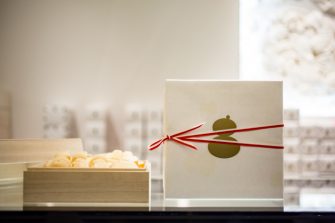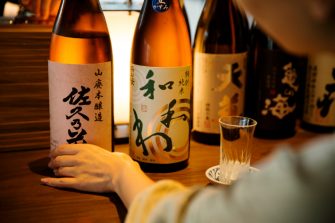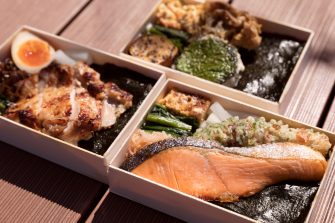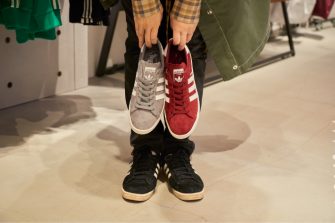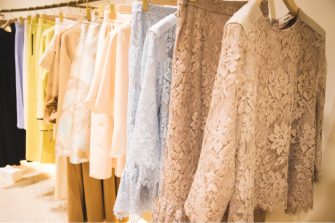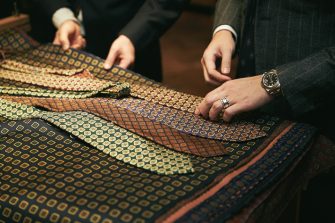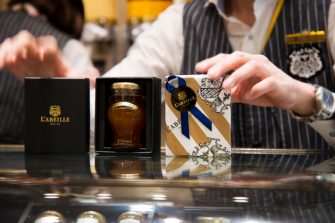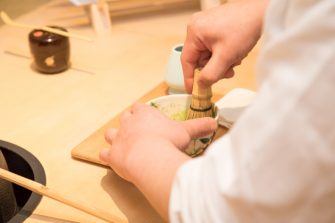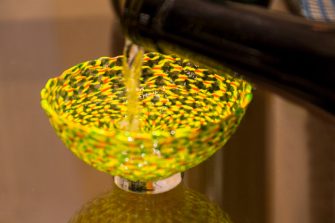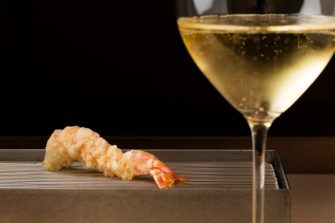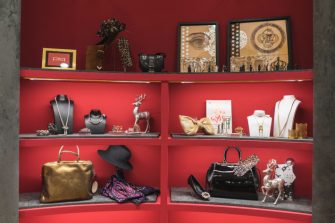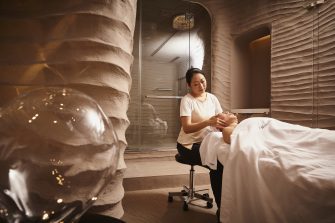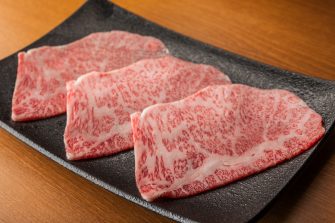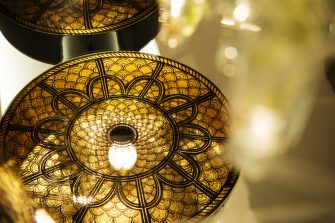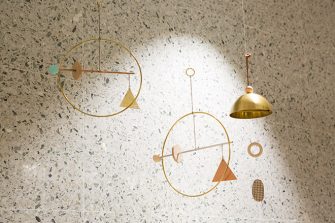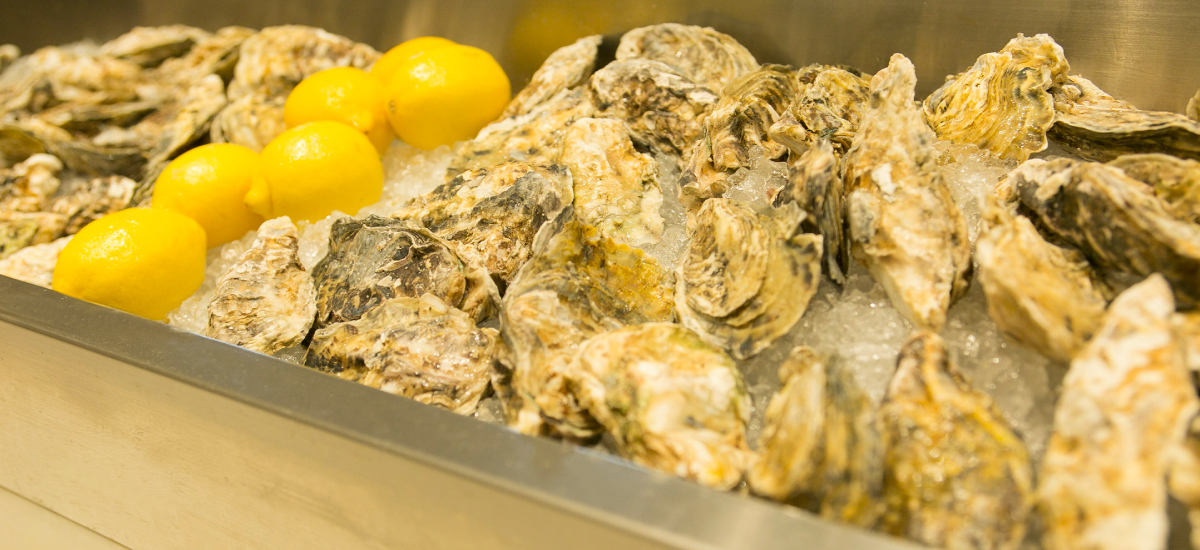

GINZA SIX EDITORS
ファッション、ジュエリー&ウォッチ、ライフスタイル、ビューティ、フード…
各ジャンルに精通する個性豊かなエディターたちが、GINZA SIXをぶらぶらと
歩いて見つけた楽しみ方を綴ります。
新しい“何か”が引力をもって待っている Something New Awaits to Entice You
安齋 喜美子
GINZA SIX EDITORS Vol.76
日々仕事で忙しくしている身にとって、”オトナ女子会”はなによりのご褒美。久しぶりに会う友人への”プチギフト”を探しに訪れるのが「GINZA SIX」だ。よく利用するのはB2Fのフードフロアで、「平翠軒」「ベッジュマン&バートン」「千年こうじや」は特にお気に入り。もちろん、自分のために“「エノテカ」でワイン”は必須。
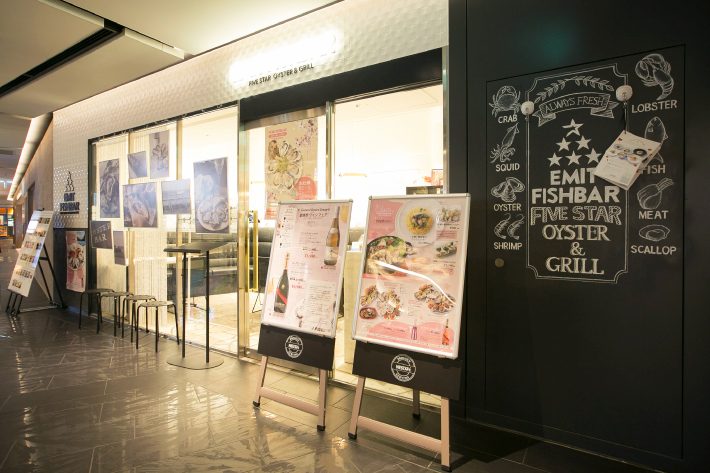
先日はちょっと時間があったので、館内を散策。気になったのが6Fにある「EMIT FISHBAR(エミット フィッシュバー)」だった。
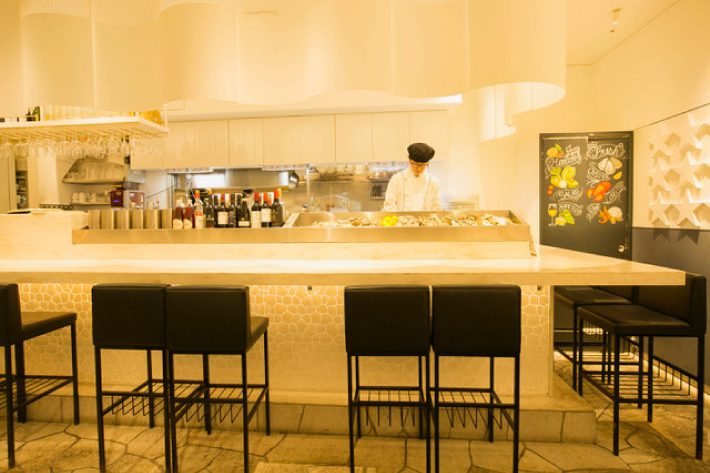
ここの魅力はなんといっても新鮮な生牡蠣。産地別に食べ比べができて楽しいのはもちろん、安全管理も徹底している。富山県の自社センターで特許技術を用いて海洋深層水で牡蠣を浄化しており、牡蠣は全国から、その季節にいちばんおいしい産地を厳選しているという。
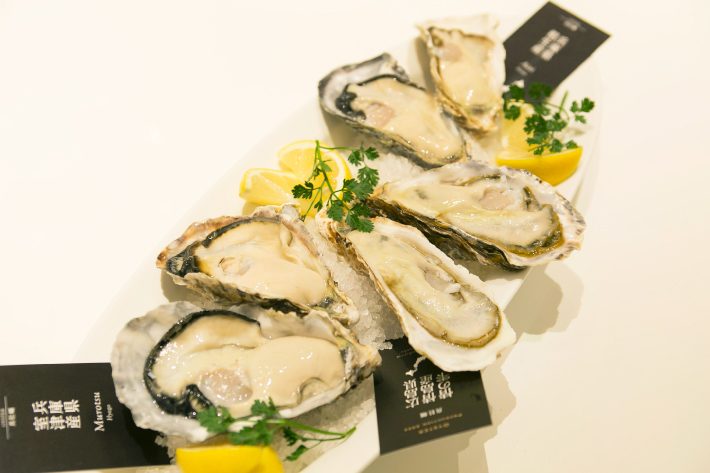
この日の「本日の生牡蠣」(6ピース盛り合わせ 2,880円 ※以下全て税抜価格)は「兵庫県相生産」「兵庫県室津産」「広島県情島産情の雫」の3産地の牡蠣を食べ比べ。実は兵庫県の牡蠣は初体験。みずみずしくてクリーミー。
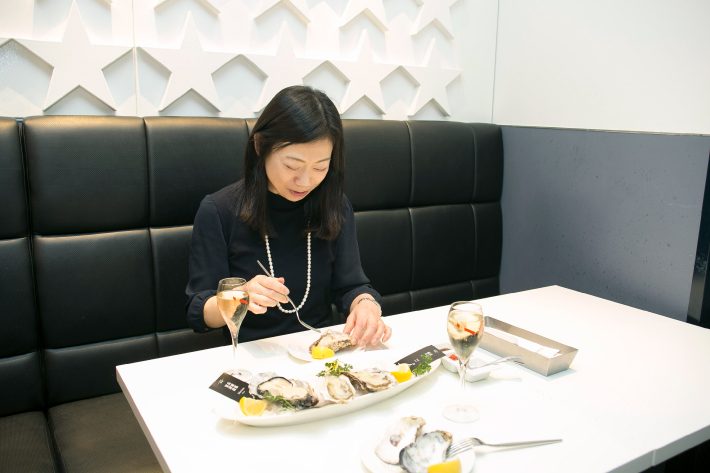
牡蠣にあたるのが怖くて、海外の取材などではいつも生牡蠣を我慢していた私。ならば、と、この日は思う存分、生牡蠣を爆食。フレッシュでミルキーな味わいが口中に広がる。シャンパーニュと一緒の生牡蠣は本当に”パラダイス”!
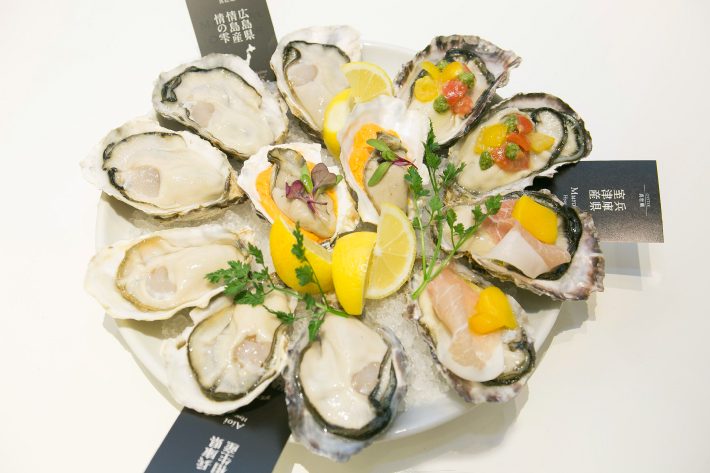
せっかくだからと「オイスター13ピースセット」(3,980円)もオーダー。生ハムとマンゴーなど、ちょっと変わった牡蠣の食べ方が新しい。ほかにも、牡蠣フライや香草焼き、素焼など、牡蠣の料理法のバリエーションが豊か。実はここには、ニュージーランドでよく見られる冷たいものから温かいものまで楽しめる一皿もあって、かの地を旅したことがある人なら、そんなプレゼンテーションにもきっと心躍らされるはず。
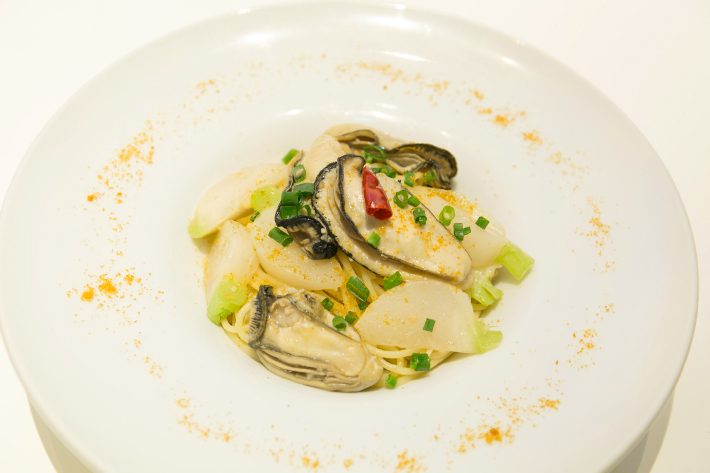
締めは「牡蠣とカブのペペロンチーノ」(1,380円)で。牡蠣のうまみがパスタとカブにしみ込んで美味。牡蠣はもちろんプリプリ。ランチは、これ一皿だけでも十分満足できるはず。「今度、さらっとお昼に寄ってみよう」と決意。ランチタイムやディナーなど、女性のひとり客も多いそう。
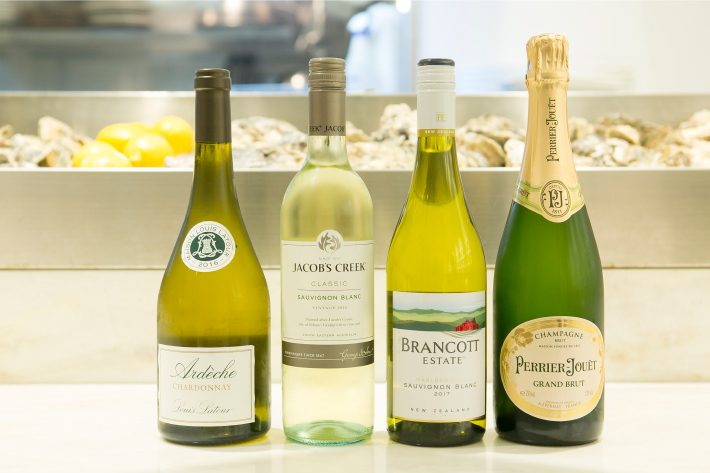
感動したのがワインのラインナップ。種類はさほど多くはないが、ニュージーランドのソーヴィニヨン・ブランなど、牡蠣にぴったりのものがセレクトされている。価格も良心的で、「ペリエ・ジュエ グラン・ブリュット」(9,900円)も驚くほどリーズナブル。これはもう、シャンパーニュ&牡蠣好きの友人と近々再訪しなくては!
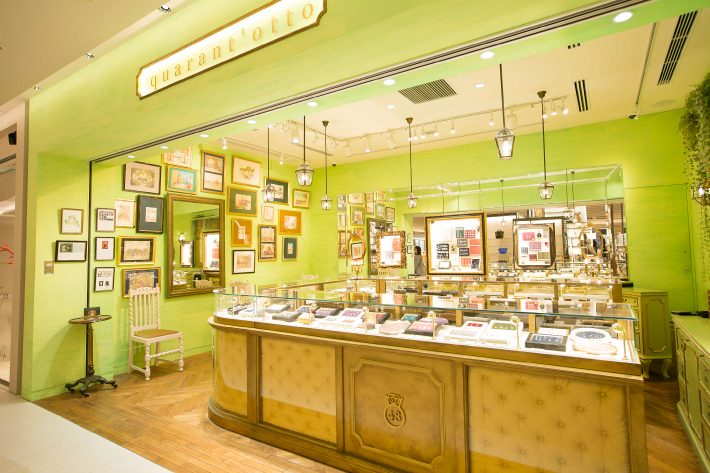
その後、館内散策の途中、引力を感じるように引き寄せられたのが2Fの「quarant'otto(クアラントット)」。可愛らしいディスプレイに「スイーツショップ?」と思ったら、ジュエリーショップだった。最初に心惹かれたのは壁に飾られた絵の数々。可愛らしくて、それでいて幻想的で、どこか別の次元に誘われるような感覚。描いたのは、ジュエリーデザイナーの伏見愛佳さん。
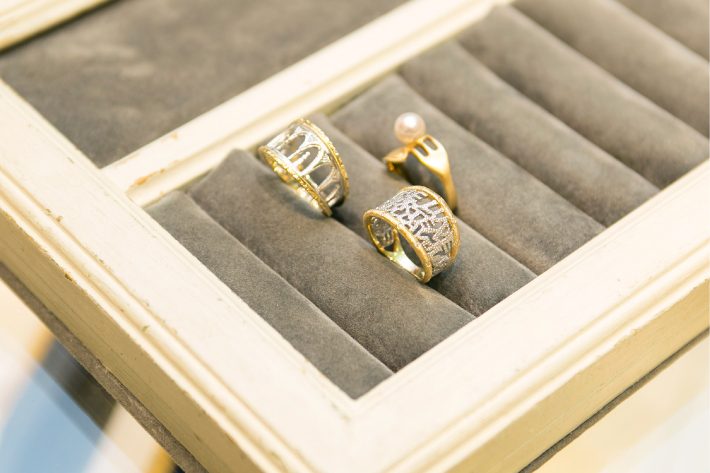
ジュエリーにはまったく無縁だった私を完全に魅了したのが、その世界観。デザインがただ美しいだけでなく、ジュエリーの向こうに“物語”が感じられるのだ。たとえば、中世の教会の回廊をモチーフにした「ウナスト―リア(ある物語)」(200,000円)という名前の指輪。回廊で男女が出会う姿が、とてもロマンティック。また、ラテン語をモチーフにした指輪「エデ・ビベ・ルーデ」は、「食べろ、飲め、遊べ。死後に快楽はなし」の意。フォークと真珠のデザインは「アレトレ(3時)」で、おやつの時間を意味するという。「真珠がおやつ」という発想はエスプリが効いていて楽しいし、デザインも可愛い。

この日、店頭に立っていた伏見さんに「今の気分は?」と聞かれて、「フリーランスなので、精神的にもっと“強さ”をもちたい」という私に、伏見さんがペンダントを選んでくださった。ジュエリーショップで試着なんて、今までほとんどなかったのに、次々につけてみたくなるデザインがいっぱい。「ジュエリーに呼ばれる」という経験は初めてのこと。ジュエリーは、ただのアクセサリーではなくて、自分の中のなにかと呼応するものなのだと実感する。
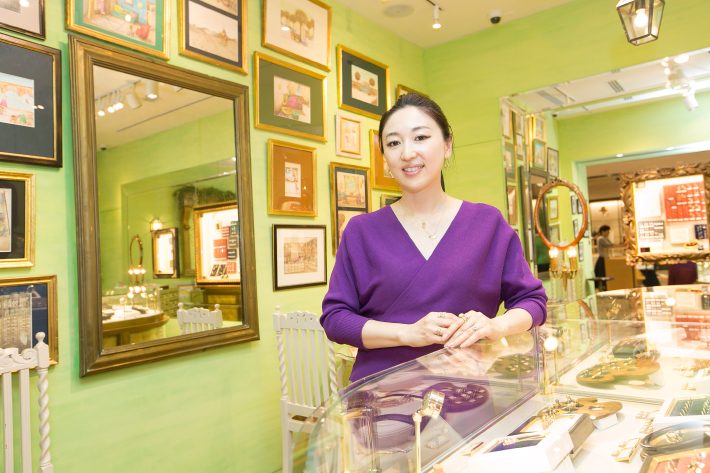
こちらがデザイナーの伏見愛佳さん。土曜日はなるべくお店に出て、お客様のジュエリー選びを手伝うという。「私のジュエリーを好きでいてくださるお客様とは、いろいろなことをお話ししたくて」と微笑む。本店はフィレンツェ。お会いできてよかった!

ハイヒールのペンダントヘッドは一見“シンデレラの靴”のように見える。でも、伏見さんによれば、これは自ら幸運を掴むために一歩踏み出す“カルメンの靴”、その名も「カルメン」(120,000円 ※チェーン別売)。仕事をする女性がお守りにするために購入することもあるそう。時計の文字が少しゆがんだペンダントへッドは「イル・テンポ(時計)」(26,000円 ※チェーン別売)。「今にも踊り出しそうな時間をつかまえて!」の意。フィーリングに合うジュエリーはなかなかないので、これは“出会い”なのだと思う。まずは仕事を頑張って、ここを訪れよう。
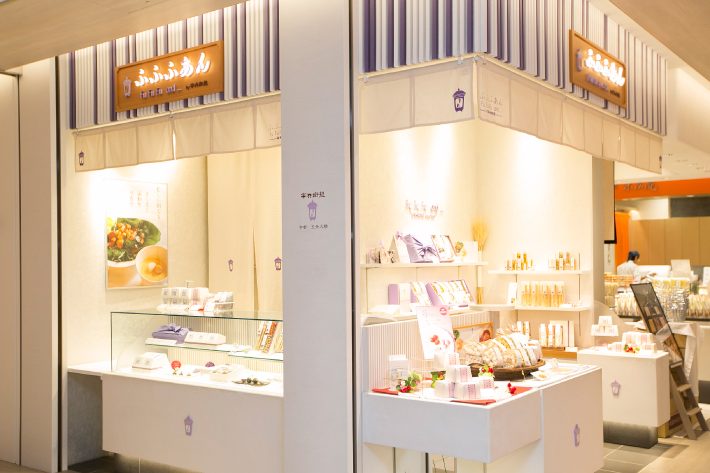
最後は、B2Fのフードフロアへ。ここはいつも新しい発見があるので、スルーできない。この日は「ふふふあん by 半兵衛麸」へ。京都の老舗のお麸専門店「半兵衛麸」が提案する新しいスタイルのお麸のお店で、京都の精進料理に欠かせないお麸をモダンにアレンジしたお菓子などを扱っている。お麩は美肌効果があるとされ、グルテンアレルギーがなければおすすめ。
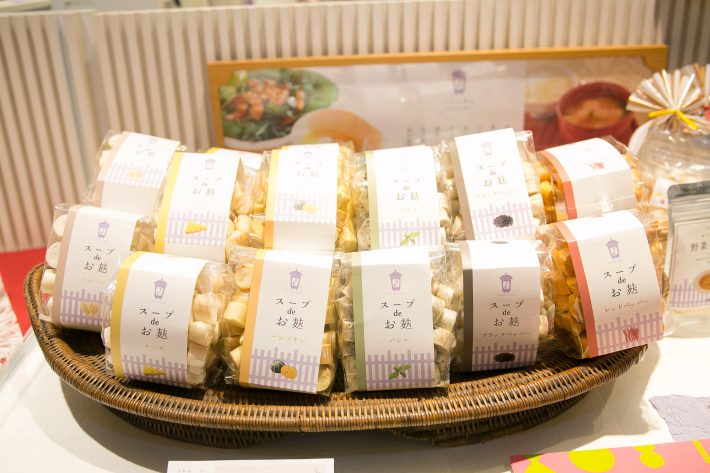
「スープ de お麸」(各497円)。お湯を注いで焼き麸を入れるだけで、おいしいスープの出来上がり。休日の朝に飲んだら、いつもと気分が違ってきそうな予感。誰にでも喜ばれそうなので、”プチギフト”に決定。焼き麸の味はプレーン、チーズ、バジル、ブラックペッパーなど、バラエティ豊か。私はブラックペッパーがお気に入りに。
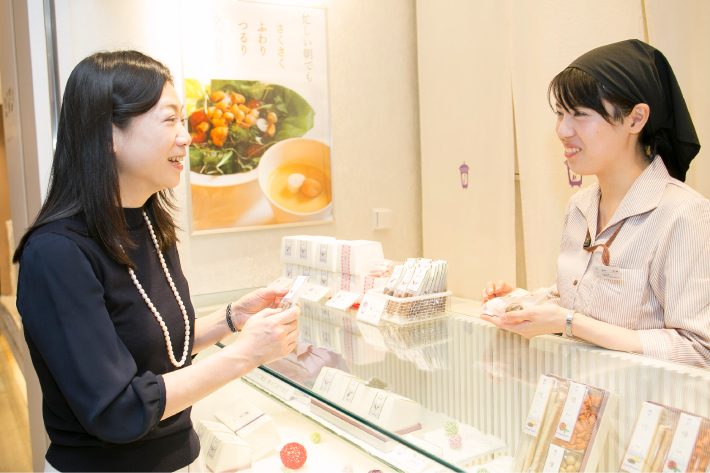
手にしているのは「梢」(294円)というお麸のお菓子。ココア、抹茶、紅茶と3つの味が楽しめる。ココアはサクッと軽い食感で、あとをひくおいしさ。これも3種の味を揃えてプレゼントにしたい。
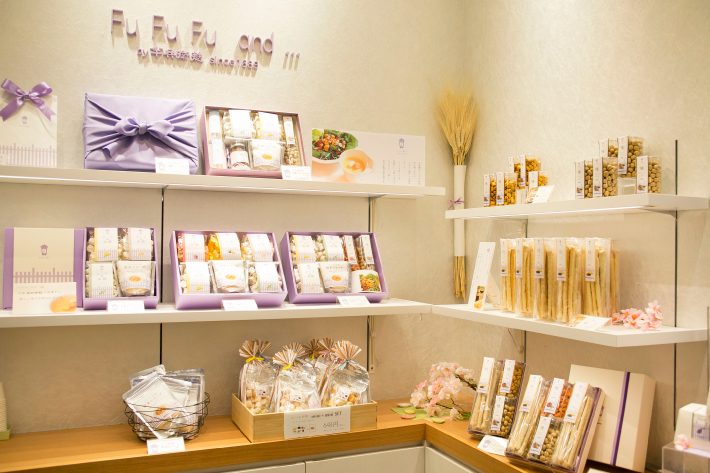
京都の「半兵衛麸」へは、プライベートや取材で何度か訪れたことがある。元禄2年創業の老舗で、330年に渡り、時代に即した様々なお麸の食べ方を伝承してきた。「伝統を守り、真っ当なものをつくる」という意識が高い老舗だが、伝統に甘んずることなく、現代のライフスタイルに合う商品を次々と開発しているところが素晴らしい。「お麸がこんなに可愛いお菓子になるなんて!」と、またまた発見。個人的に好きなのがパルミジャーノ・レッジャーノとブラックペッパーを練りこんだスティック状のクラッカー「枝」(1,080円)。シャンパーニュやワインにぴったり!
もう何度も訪れているはずなのに、銀座に来るとついつい足が向いてしまうのがGINZA SIX。いつも新しい何かに出合えるという期待感と、ここなら「“ちょっと洒落たもの”が必ず見つかる」という安心感からだろうか。
Text:Kimiko Anzai Photos:Tomoko Shimabukuro Edit:Yuka Okada
For someone like me who works around the clock, nights out with the girls are little rewards. On such occasions, I like to bring my friends little gifts, and I go to GINZA SIX to choose them. Often I’ll go to the Food Floor on the second belowground floor, especially to Heisuiken, Betjeman & Barton, and Sennenkoujiya. And I always stop by Enoteca to pick up some wine for myself.

Finding myself with a little extra time the other day, I went for a stroll at GINZA SIX. EMIT FISHBAR on the sixth floor caught my attention.

This restaurant is known, above all, for its fresh raw oysters. It’s great fun to taste and compare oysters from different production regions. The restaurant’s safety management is unusually thorough. Based on a patented process, the oysters are purified with deep sea water at the restaurant’s own distribution center in Toyama Prefecture. Production regions are carefully selected from all around Japan to ensure the best oysters for a given time of year.

The Fresh Oysters of the Day platter (6-piece combo, 2,880 yen; all prices listed before tax) lets you sample oysters from three regions: Aioi, Hyogo Prefecture; Murotsu, Hyogo Prefecture; and Nasakejima, Hiroshima Prefecture (Nasake no Shizuku oysters). This was the first time I’d tried oysters from Hyogo Prefecture. They turned out to be creamy and juicy.

Normally, I’m wary of oysters and their potential for food poisoning. I’ve put up with eating raw oysters as part of my research for articles overseas. Today, I find myself eating these oysters with abandon, throwing caution to the winds. They fill my mouth with a fresh, milky flavor. Champagne and raw oysters together are an ambrosial match, a divine pairing.

Nor can I pass up the opportunity to order the Oyster 13 Piece Set (3,980 yen). Dry-cured ham and mangos certainly represent a fresh take on culinary accompaniment for oysters. The restaurant offers any number of variations in how oysters are prepared, including deep-fried, herb-roasted, and straight grilled. They also offer platters with both cold and cooked oysters, a combination you often encounter in New Zealand. If you’ve been there and know what I mean, the presentation here will no doubt make you feel excited.

To top everything off, I had Oyster and Turnip Peperoncino (1,380 yen). The pasta and turnips were suffused with the savory taste of plump oysters—lovely! For lunch, you could probably eat your fill on just this one dish. I made a mental note to return here for lunch. I’m told numerous women enjoy themselves here on their own, whether for lunch or dinner.

The restaurant’s wine list is impressive—not necessarily for its range or volume, but for selections that go perfectly with oysters, like New Zealand Sauvignon Blanc. The prices are fair. The Perrier Jouet Grand Brut, for example, is an eminently reasonable 9,900 yen. I’ll return with friends who love champagne and oysters, sometime soon!

Continuing with my GINZA SIX stroll, I’m drawn to quarant’otto on the second floor and stop in. On seeing the appealing displays, I think: “…candy shop…?” Actually, it’s a jewelry store. What caught my attention was the many pictures on the walls. They radiate a dreamy appeal that draws the viewer into another dimension. Noteworthy is that the artist responsible for these paintings is jewelry designer Aika Fushimi.

I’ve never been all that interested in jewelry, but I find the imaginative world created by Aika Fushimi captivating. Her designs aren’t merely beautiful. They seem to tell a story, to hint at hidden aspects. For example, the motif for the ring, Una Storia (200,000 yen), is medieval church cloisters. The idea of a man and woman meeting in such a cloister has a special romance. Another ring, Ede Bibe Lude, refers to the Latin expression “Eat, drink, and play, for after death there is no pleasure.” The fork and pearl design is called Alle Tre (3 o’clock), which means tea time. The concept of pearls accompanying tea is a fun and playful notion, and the design is adorable.

Fushimi-san was in the store that day, and she asked me how I was feeling. I’m a freelancer, I responded; I want to feel stronger mentally. She then chose a pendant for me. I hardly ever try on jewelry in a store, but these designs won me over. I wanted to keep trying one thing after another. Many of the pieces here inspire this response. It was my first experience with the eloquence of jewelry—experiencing jewelry not as an accessory, but as a voice in harmony with qualities inside you.

This is the designer, Aika Fushimi. She tries to be in the store on Saturdays and helps customers in selecting pieces. “I always have so much to talk about with people who like my jewelry,” she says, smiling. Their flagship store is in Firenze. I’m delighted to meet her!

At first glance, the high-heel pendant head looks like Cinderella’s slipper. According to Fushimi-san, however, it’s Carmen’s shoe, taking one step forward toward good fortune—thus, the name Carmen (120,000 yen; chain sold separately). Working women buy the pendant, she tells me, as a good luck charm. The pendant head with a slightly warped clock face is Il Tempo (time) (26,000 yen; chain sold separately). It means: “Seize your time before it slips away, dancing.” I’ve come across so little jewelry that suits my tastes and sensibility; this must be serendipity. I’m prepared to throw myself into my chosen work and to make a return visit.

My last stop is the Food Floor on the second belowground floor. I always make new discoveries here, so it’s one store I never pass on. Today I go to Fu Fu and… by Hanbey-fu, a new style of fu (wheat gluten) shop developed by a traditional Kyoto proprietor of fu named Hanbey-fu. Fu is an essential ingredient in Kyoto-style Buddhist vegetarian cuisine. Here it’s sold in modern presentations, like confections. Fu is said to be good for the skin and highly recommended, as long as you don’t have a gluten allergy.

Soup de O-Fu (497 yen each). Pour in hot water and add yaki-fu (roasted fu) to make a delicious soup. I can see myself eating this in the morning on a day off, then I can start out with a different outlook. I buy some for my friends—I’m convinced anyone would find this a delightful gift. The yaki-fu comes in flavors like plain, cheese, basil, and black pepper, a real variety. I like the black pepper.

Here I’m holding Kozue (294 yen), a fu confection. It comes in three flavors: cocoa, matcha, and black tea. The cocoa is crisp and light, so delicious you’ll always want another. A combination of all three flavors would make a nice gift.

I’ve been to Hanbey-fu in Kyoto a number of times both for work and for pleasure. Founded in 1689, over some 330 years, it’s come up with various imaginative ways of preparing fu tailored to the times. The store seeks to make quality products based on a keen awareness of tradition, but I love how it hasn’t relied on tradition alone—how it’s continued to develop products for contemporary lifestyles. I keep making discoveries: I didn’t know fu could be made into charming confections like this. I’m a fan of Eda (1,080 yen), stick-shaped crackers of fu kneaded with Parmesan cheese and black pepper. With champagne or wine, they’re simply perfect.
I’ve been here so many times already, but I always find myself heading to GINZA SIX whenever I’m near Ginza. Could this be because I always expect to encounter something new, because I’m certain I’ll find something stylish?
Text:Kimiko Anzai Photos:Tomoko Shimabukuro Edit:Yuka Okada
安齋 喜美子
ワイン&フード ジャーナリスト。出版社勤務を経て独立。ライフスタイル誌やワイン専門誌で料理やワイン、旅などの記事を手がける。国内外のワイナリーや醸造家取材も多数。著書に『葡萄酒物語』(小学館)。『エクラ』(集英社)で「飲むんだったらイケてるワイン」連載中。シャンパーニュ騎士団シュヴァリエの称号も持つ。


